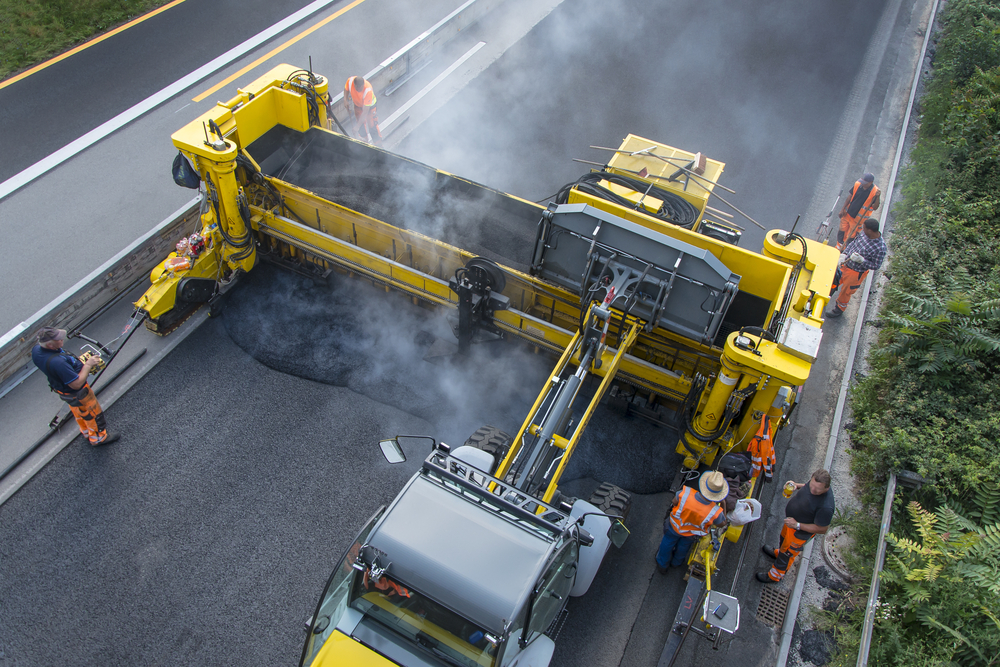Unknown Facts About A1 Professional Asphalt & Sealing Llc
Unknown Facts About A1 Professional Asphalt & Sealing Llc
Blog Article
A1 Professional Asphalt & Sealing Llc Fundamentals Explained
Table of ContentsA1 Professional Asphalt & Sealing Llc Can Be Fun For EveryoneThe 8-Second Trick For A1 Professional Asphalt & Sealing LlcEverything about A1 Professional Asphalt & Sealing LlcUnknown Facts About A1 Professional Asphalt & Sealing LlcExcitement About A1 Professional Asphalt & Sealing Llc

The oil in a vehicle engine is not simply oil. It includes a variety of ingredients to enhance the lorry's efficiency. These consist of polymers, viscosity modifiers, heat stabilizers, extra lubricants, and wear additives. The REOB includes all the ingredients that remained in the waste oil in addition to the wear steels from the engine (mostly iron and copper).
However, by making lots of blends utilizing different REOB examples and different asphalt binders, the variations greatly can be averaged out. Several States provided examples of known REOB composition to TFHRC scientists, that evaluated the examples to compare the percent of added (known) REOB to the found (evaluated) amount. The analyses showed an equivalent percentage of added and found REOB.
10 Easy Facts About A1 Professional Asphalt & Sealing Llc Explained
They received an overwhelming feedback. The TFHRC scientists examined 1,532 samples from 40 States, one Canadian district, and 2 Government Lands Freeway divisions. They analyzed each sample twiceamounting to greater than 3,000 analyses. None of those States recognized that the asphalt they were getting had REOB. One State insisted its samples had no REOB.
Of the 1,532 samples checked, 12 percent had REOB, and some consisted of significantly high levels of it at 1020 percent. The highest degree was 34 percent in an example from Texas, which TxDOT had actually utilized in a patching compound. This screening likewise disclosed the presence of phosphoric acid in 11 percent of the examples, and 2 percent contained ground tire rubber.
2 years ago at TRB's yearly meeting, the Federal researchers held an REOB workshop and provided the findings of their research laboratory examinations to a standing room-only group. Some agencies do not particularly ban REOB, they do impose physical tests that prevent its useeffectively a restriction. Others do not ban it by spec, however have agreements with asphalt providers to prevent the usage of REOB
Unknown Facts About A1 Professional Asphalt & Sealing Llc
Ohio and Texas limit levels to much less than 5 percent of the asphalt. To create a dependable test method that all States can use, the TFHRC researchers established up a round-robin examination strategy.
In total amount, the scientists prepared and shipped 720 blends. The participants are evaluating the samples independently using the guidelines provided by the TFHRC scientists. The round-robin screening is almost completed, and TFHRC is in the process of gathering the results. The result will be a proposed AASHTO examination approach that any type of State can embrace and use (asphalt sealcoating in st louis).
The pavement with REOB, which is situated 0.6 mile (1 kilometer) from the pavement without REOB, has identical subgrade, website traffic density, and environment. The section of Highway655 with 5 to 10 percent REOB showed substantial breaking. In this instance, the presence of REOB was the recognized root cause of fracturing at a low temperature levels.
"In our experience in Canada, also small quantities of 23 percent can be a problem." Likewise, an area of test sidewalk in Minnesota (MN1-4) located to include REOB additionally broke too soon. The sidewalk carried out well for the very first 3 to 4 years, yet then began to crack. This pavement is likewise based on low temperatures.
Indicators on A1 Professional Asphalt & Sealing Llc You Should Know
The tests were not comprehensive, but they showed that at levels of 6 percent or even more, the tensile toughness of the asphalt went down substantially. At a degree of 3.5 percent REOB, the variation in the physical test methods was higher than the effect of REOB. It was tough for researchers to evaluate whether REOB was present. https://slides.com/a1asphaltseal.

One binder parameter considered is the distinction in between the reduced temperature vital spec temperature for stiffness (S) in the bending light beam rheometer and the flexing beam of light rheometer creep slope (m-value) kept in mind as Tcritical. TC = TC (S) TC (m-value). Evaluation of this criterion is still continuous. Two independent research teams, one from AASHTO and the various other from the Asphalt Institute, ended that more research is required on the usage of REOB in asphalt.
Previously, all asphalt screening determined engineering homes such as stiffness. These examinations do disappoint what products had been included in the asphalt. One sample gotten during the TFHRC research study had a very odd analysis. The example had the following examination outcomes: Superpave PG 64-28 with a heat quality of 67.3 Tcritical on the bending beam of light rheometer was 6.7 next page levels Celsius.

The Only Guide for A1 Professional Asphalt & Sealing Llc
These outcomes show there are weaknesses in the standardized design screening procedures that might be made use of. The producer might have a financial benefit and the product passes all the standard tests, but the product might not be beneficial to making certain lasting performance. To address this concern and the growth of new asphalt ingredients and extenders, TFHRC is beginning a research study program to make use of portable spectroscopic tools, x-ray fluorescence spectroscopy, and Fourier transform infrared spectroscopy to make it possible for analyses to be carried out in the field as opposed to needing to take samples back to the lab.
Report this page